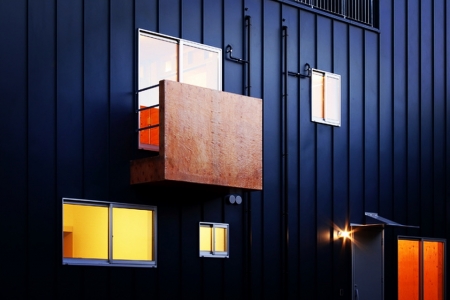選択できる状態
人のアクティビティによって決まる他律的な建築を可変以外の手法でつくろうとすると、何があるのだろうか。
すぐに思いつくのは、人の意識を利用することだが、気をつけないと、あまりにも観念的になり過ぎるような気がして躊躇してしまう。それでなくても、設計者は観念的になりやすい。頭の中だけで全体的なつながりを考えて、それをそのまま構築してしまい、おかしなことになっている建築がたまにある。それは設計者の姿勢としては悪いことではないと思うが、具体的現実との折り合いがもう少し必要になる。
可変でなければ、選択できるということもある。選択には人のアクティビティが伴う。人が選択することによって建築が決まる、それは他律的な建築になる。その場合は、建築が選択できる状態にあることをつくれば良い。
選択ということは、少なくとも1つの動線という指向性のアクティビティではなくて、複数の動線による無指向性に近いアクティビティが必要になる。
複数の動線による無指向性の空間はイメージできる、あとは具体的現実との折り合いであり、今回は集合住宅である。
"Selectable state"
What would happen if we tried to create a heterogeneous architecture determined by human activities by means other than variable?
The immediate idea is to use human consciousness, but if you are not careful, you may feel hesitant to be too ideological and hesitate. Even so, designers tend to be ideological. Sometimes thinking about the whole connection only in my head and building it as it is, there are some architectures that are going wrong. I don't think that's a bad thing for a designer, but it requires a bit more work with concrete reality.
If it is not variable, it may be possible to select. Selection involves human activity. Architecture is determined by people's choices, and it becomes a heterogeneous architecture. In that case, you just need to make sure that you can choose the architecture.
The selection does not require the directional activity of at least one flow line, but requires an omnidirectional activity with a plurality of flow lines.
An omnidirectional space with multiple traffic lines can be imagined, and the rest is a compromise with concrete reality.

